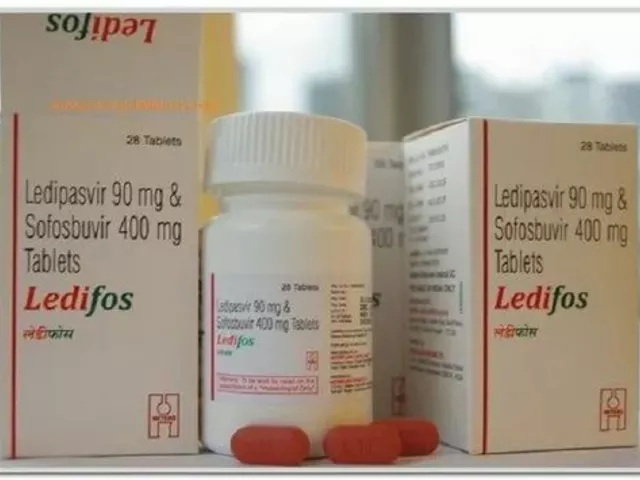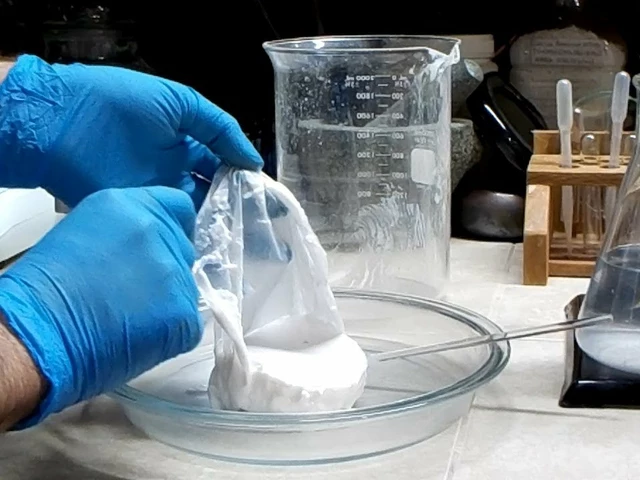Antibiotic Selection Decision Tool
Choose Your Clinical Scenario
This tool recommends the most appropriate antibiotic based on patient-specific factors. Select options below to receive tailored recommendations.
Important Note: This tool provides clinical guidance but does not replace clinical judgment or local antibiogram data. Always consider patient-specific factors and institutional guidelines before making treatment decisions.
When you or a patient face a tough Gram‑positive infection, deciding which antibiotic to use can feel like a high‑stakes puzzle. Zyvox vs alternatives is a common question among clinicians, pharmacists, and even informed patients trying to balance effectiveness, safety, and cost.
What Is Zyvox (Linezolid)?
When tackling serious Gram‑positive infections, Zyvox (Linezolid) is a synthetic oxazolidinone antibiotic that blocks bacterial protein synthesis by binding to the 23S rRNA of the 50S ribosomal subunit. Approved by the FDA in 2000, it quickly became a go‑to option for skin and soft‑tissue infections, pneumonia, and bloodstream infections caused by methicillin‑resistant Staphylococcus aureus (MRSA) and vancomycin‑resistant Enterococcus (VRE). Its oral bioavailability exceeds 99%, allowing seamless IV‑to‑oral switch.
Key Alternatives on the Market
While Zyvox is powerful, several other agents offer overlapping coverage or distinct advantages. Below are the most frequently considered rivals:
- Daptomycin - a cyclic lipopeptide that disrupts bacterial cell‑membrane potential. Ideal for bloodstream infections and right‑sided endocarditis, but inactivated by lung surfactant.
- Vancomycin - a glycopeptide that interferes with cell‑wall synthesis. Long‑standing MRSA workhorse, though nephrotoxicity and the need for therapeutic drug monitoring are downsides.
- Tedizolid - a newer oxazolidinone with a better safety profile and once‑daily dosing, approved for acute bacterial skin and skin structure infections (ABSSSI).
- Ceftaroline - a fifth‑generation cephalosporin with activity against MRSA and a broad Gram‑positive/Gram‑negative spectrum, administered IV only.
- Linezolid (generic) - the same molecule as Zyvox, usually at a lower price after patent expiry.
Efficacy: Clinical Data at a Glance
Head‑to‑head trials are limited, but meta‑analyses give us a solid picture. For skin and soft‑tissue infections (SSTIs), linezolid (Zyvox) shows a clinical cure rate of about 91% compared with 86% for vancomycin. In hospital‑acquired pneumonia caused by MRSA, cure rates hover around 85% for both linezolid and vancomycin, but linezolid often yields faster bacterial clearance.
Daptomycin, when used for bacteremia, demonstrates a 90% success rate, slightly higher than vancomycin’s 84%, though the data pool is smaller. Tedizolid’s phase‑III trials report a 92% cure rate for ABSSSI, matching linezolid’s efficacy while cutting the treatment duration to six days.
Safety and Tolerability
Each drug carries its own risk profile:
- Zyvox (Linezolid): thrombocytopenia (≈10% after 14 days), peripheral neuropathy with prolonged use, and serotonin syndrome when combined with certain antidepressants.
- Daptomycin: dose‑related myopathy-creatinine‑kinase (CK) monitoring required; rare eosinophilic pneumonia.
- Vancomycin: nephrotoxicity (≈5‑10% at trough >15 µg/mL) and ototoxicity in high doses.
- Tedizolid: lower rates of hematologic toxicity; mild gastrointestinal upset is most common.
- Ceftaroline: generally well tolerated; occasional diarrhea and rash.
For patients with renal impairment, linezolid’s hepatic clearance gives it an edge over vancomycin and ceftaroline, which need dose adjustments.
Pharmacokinetics and Dosing Simplicity
Convenient dosing can improve adherence and reduce hospital stay:
| Drug | Route | Typical Adult Dose | Half‑Life | Renal Adjust? |
|---|---|---|---|---|
| Linezolid (Zyvox) | IV / PO | 600 mg q12h | ~5‑7 h | No |
| Daptomycin | IV | 4‑6 mg/kg q24h | ~8‑9 h | Yes (high‑dose) |
| Vancomycin | IV | 15‑20 mg/kg q8‑12h (titrated) | ~6‑8 h | Yes |
| Tedizolid | IV / PO | 200 mg q24h | ~12 h | No |
| Ceftaroline | IV | 600 mg q12h | ~2.5 h | Yes |
The once‑daily schedule of tedizolid often wins points for outpatient therapy, while Zyvox’s oral option lets clinicians finish treatment at home without loss of efficacy.
Cost Considerations (2025 US Market)
Price matters, especially for long‑term therapy. Approximate wholesale acquisition costs for a typical 10‑day course:
- Zyvox (brand) - US$ 2,800
- Generic linezolid - US$ 1,200
- Daptomycin - US$ 3,200
- Vancomycin - US$ 150 (generic) but monitoring adds indirect costs
- Tedizolid - US$ 2,000
- Ceftaroline - US$ 2,500
Insurance formularies often favor generics and vancomycin, yet the total cost of care (monitoring, length of stay) can tilt the balance toward linezolid or tedizolid for certain patients.

Choosing the Right Agent: Decision Matrix
Below is a quick‑reference guide to help match patient scenarios with the most suitable drug.
| Clinical Scenario | Preferred Choice | Why? |
|---|---|---|
| MRSA skin/soft‑tissue infection - outpatient | Linezolid (generic) or Tedizolid | Oral availability, high cure rates, short course (tedizolid) |
| VRE bloodstream infection | Linezolid (Zyvox) or Daptomycin | Both active against VRE; linezolid for oral step‑down |
| Pneumonia with high lung surfactant | Vancomycin or Linezolid | Daptomycin inactivated in lungs |
| Renal failure, need for dose simplicity | Tedizolid or Linezolid | Both non‑renally cleared |
| Cost‑sensitive setting with IV access | Vancomycin (generic) + therapeutic drug monitoring | Lowest acquisition cost |
Remember that local resistance patterns and hospital antibiograms should always be consulted before finalizing therapy.
Practical Tips for Clinicians
- Always review the patient’s medication list for serotonergic agents before starting linezolid.
- Monitor platelet count weekly if therapy exceeds 14 days.
- Check CK levels on day 3-5 when using daptomycin, especially in obese patients.
- For vancomycin, target troughs of 15‑20 µg/mL in serious infections; use Bayesian dosing where available.
- Consider early IV‑to‑PO switch with linezolid to shorten hospital stays.
Frequently Asked Questions
Can I take Zyvox and an SSRI together?
Mixing linezolid with selective serotonin reuptake inhibitors (SSRIs) can raise the risk of serotonin syndrome. If both are needed, choose an SSRI with low serotonergic activity, monitor closely for agitation, sweating, or rapid heart rate, and involve a pharmacist.
Is Tedizolid a better option than Zyvox for skin infections?
For uncomplicated skin infections, tedizolid offers similar cure rates with a six‑day course and fewer blood‑related side effects. However, Zyvox remains the cheaper choice when generic linezolid is affordable.
What’s the biggest drawback of Daptomycin?
Its inactivation by lung surfactant makes it unsuitable for pneumonia, and the need for regular CK monitoring can be cumbersome in busy settings.
How does resistance to Linezolid develop?
Resistance usually arises from mutations in the 23S rRNA gene or acquisition of the cfr methyltransferase gene, which reduces drug binding. Such resistance remains relatively rare but is more common in prolonged therapy for tuberculosis.
Which drug is preferred for a patient on dialysis?
Linezolid and tedizolid are cleared hepatically and don’t require dose adjustment for dialysis, making them safer choices than vancomycin or daptomycin, which need careful dosing.






Maridel Frey
October 19, 2025 at 17:24
Linezolid’s near‑perfect oral bioavailability (≈99 %) provides clinicians a seamless IV‑to‑PO transition, reducing hospital length of stay and associated costs. Its mechanism of binding the 23S rRNA of the 50S ribosomal subunit ensures bacteriostatic activity against most Gram‑positive organisms, including MRSA and VRE. The standard dosing of 600 mg every 12 hours simplifies therapeutic regimens and eliminates the need for renal dose adjustments, which is advantageous in patients with compromised kidney function. Moreover, the drug’s hepatic clearance minimizes the requirement for therapeutic drug monitoring, unlike vancomycin. When considering adverse‑event profiles, clinicians should remain vigilant for thrombocytopenia after prolonged therapy, typically beyond two weeks, and for potential serotonin syndrome in patients receiving serotonergic agents. Overall, the pharmacokinetic and pharmacodynamic attributes of linezolid make it a valuable option for both inpatient and outpatient management of serious Gram‑positive infections.